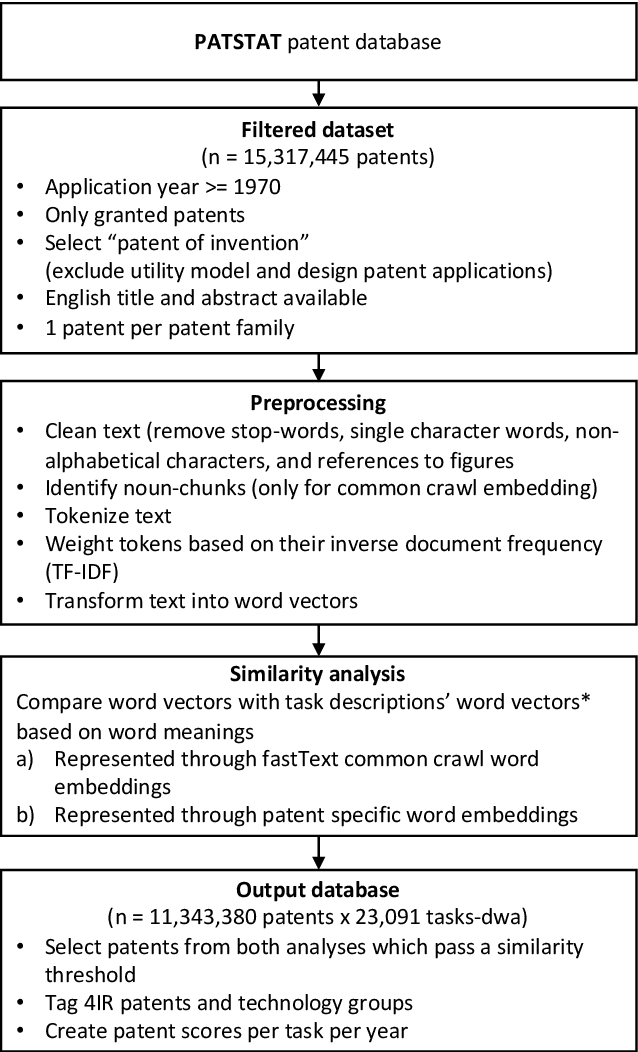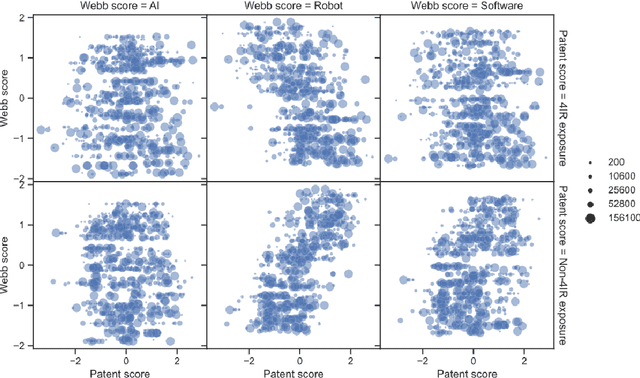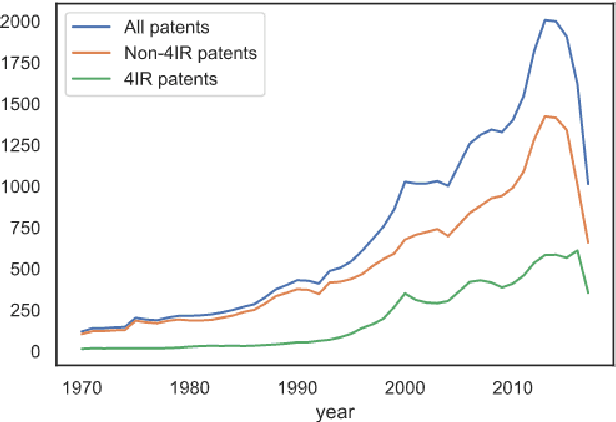Joana Mendonça
Mapping Industry 4.0 Technologies: From Cyber-Physical Systems to Artificial Intelligence
Nov 28, 2021



Abstract:The fourth industrial revolution is rapidly changing the manufacturing landscape. Due to the growing research and fast evolution in this field, no clear definitions of these concepts yet exist. This work provides a clear description of technological trends and gaps. We introduce a novel method to create a map of Industry 4.0 technologies, using natural language processing to extract technology terms from 14,667 research articles and applying network analysis. We identified eight clusters of Industry 4.0 technologies, which served as the basis for our analysis. Our results show that Industrial Internet of Things (IIoT) technologies have become the center of the Industry 4.0 technology map. This is in line with the initial definitions of Industry 4.0, which centered on IIoT. Given the recent growth in the importance of artificial intelligence (AI), we suggest accounting for AI's fundamental role in Industry 4.0 and understanding the fourth industrial revolution as an AI-powered natural collaboration between humans and machines. This article introduces a novel approach for literature reviews, and the results highlight trends and research gaps to guide future work and help these actors reap the benefits of digital transformations.
Exposure of occupations to technologies of the fourth industrial revolution
Oct 25, 2021



Abstract:The fourth industrial revolution (4IR) is likely to have a substantial impact on the economy. Companies need to build up capabilities to implement new technologies, and automation may make some occupations obsolete. However, where, when, and how the change will happen remain to be determined. Robust empirical indicators of technological progress linked to occupations can help to illuminate this change. With this aim, we provide such an indicator based on patent data. Using natural language processing, we calculate patent exposure scores for more than 900 occupations, which represent the technological progress related to them. To provide a lens on the impact of the 4IR, we differentiate between traditional and 4IR patent exposure. Our method differs from previous approaches in that it both accounts for the diversity of task-level patent exposures within an occupation and reflects work activities more accurately. We find that exposure to 4IR patents differs from traditional patent exposure. Manual tasks, and accordingly occupations such as construction and production, are exposed mainly to traditional (non-4IR) patents but have low exposure to 4IR patents. The analysis suggests that 4IR technologies may have a negative impact on job growth; this impact appears 10 to 20 years after patent filing. Further, we compared the 4IR exposure to other automation and AI exposure scores. Whereas many measures refer to theoretical automation potential, our patent-based indicator reflects actual technology diffusion. Our work not only allows analyses of the impact of 4IR technologies as a whole, but also provides exposure scores for more than 300 technology fields, such as AI and smart office technologies. Finally, the work provides a general mapping of patents to tasks and occupations, which enables future researchers to construct individual exposure measures.
 Add to Chrome
Add to Chrome Add to Firefox
Add to Firefox Add to Edge
Add to Edge